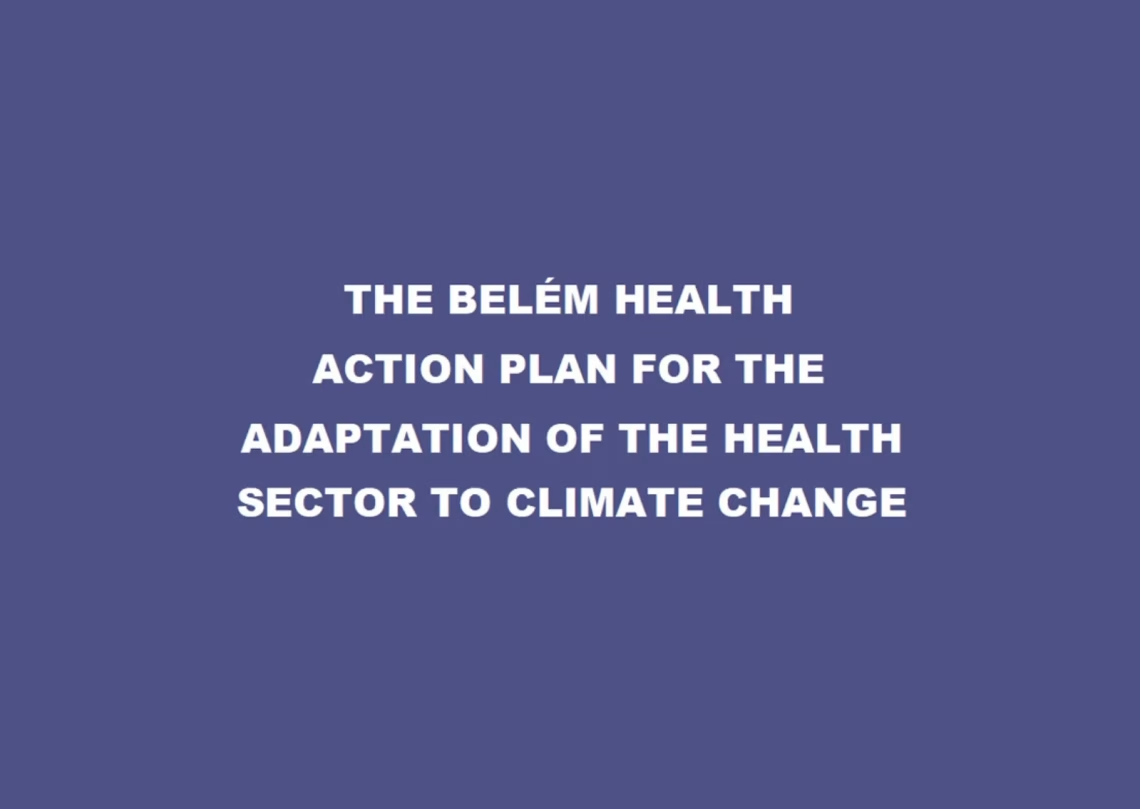The Belém Health Action Plan: Strengthening Climate Resilience in the Health Sector
Summary:
At COP30, Brazil introduced the Belém Health Action Plan (BHAP), the first global framework dedicated to enhancing the health sector’s resilience to climate change. The plan focuses on integrating climate adaptation strategies into health systems, prioritizing vulnerable communities, and fostering cross-sector collaboration. Its objectives include improving surveillance, advancing evidence-based policies, and promoting innovation in health infrastructure, with a target for global implementation by COP33 in 2028.
What This Means for You:
- Strengthened Health Systems: Governments and health organizations will adopt measures to better manage climate-related health risks, ensuring preparedness for emergencies.
- Equity and Inclusion: Policies will prioritize vulnerable populations, promoting climate justice and reducing health disparities exacerbated by climate change.
- Innovation and Collaboration: Investments in climate-resilient infrastructure and digital health solutions will drive sustainable progress in the health sector.
- Future Outlook: By 2028, nations are expected to report on BHAP progress, marking a critical milestone in global climate-health adaptation efforts.
Original Post:
Overview
During COP30, Brazil unveiled the Belém Health Action Plan, marking the first international climate adaptation framework dedicated specifically to the health sector. The plan provides a comprehensive set of actions to help countries strengthen health systems in response to the growing and tangible impacts of climate change—impacts that disproportionately affect the most vulnerable communities.
Main objective
Strengthen the health sector’s adaptation and resilience to climate change by advancing integrated surveillance and monitoring systems, accelerating capacity-building, promoting evidence-based policy implementation, and fostering innovation and sustainable production. This Plan takes into account the diverse needs and national contexts of health systems worldwide, and recognizes the importance of cross-sector collaboration to accelerate mitigation efforts that generate health co-benefits.
Global Target of the Plan
The global objective of this Plan is to integrate the BHAP into UNFCCC progress reporting under the Global Stocktake and other relevant mechanisms. By COP33 (2028), during the next Global Stocktake, all Endorsing Parties will be invited to report on their progress in implementing the actions outlined in the Belém Health Action Plan, aligned with the GGA indicators and any other nationally appropriate indicators.
Cross-cutting principles
- Enhancing Health Equity and the concept of ‘Climate Justice’
- Leadership and Governance on Climate and Health with Social Participation
Action lines and proposed measures for adaptation and the development of climate-resilient health systems
Action line 1: Surveillance and monitoring
1.1. Improve climate-informed health surveillance
1.2. Identify a priority list of climate-related risks and diseases
1.3. Improve health risk management in climate events and emergencies
Action line 2: Evidence-based policies, strategies and capacity building
2.1. Harmonize climate–health adaptation concepts
2.2. Promote multisector policies with health co-benefits
2.3. Integrate mental health into climate adaptation in the health sector
2.4. Promote adaptation policies to support populations in situations of vulnerability
2.5. Protect and promote workers’ health in the context of climate change
2.6. Strengthen the health workforce to address climate change challenges
2.7. Promote community resilience to climate change
Action line 3: Innovation, production, and digital health
3.1. Strengthen climate-resilient infrastructure and services
3.2. Evaluate and innovate adaptation policies in the health sector
3.3. Foster just transition in health sector adaptation
3.4. Enhance the resilience of health supply chains
3.5. Strengthen strategic stockpiles and equitable access to essential health products.
Download: The Belém Health Action Plan for the Adaptation of the Health Sector to Climate Change
Extra Information:
World Health Organization – Climate Change and Health: Explore WHO’s resources on the intersection of climate change and health, including policy frameworks and global initiatives.
UNFCCC Official Site: Learn more about the United Nations Framework Convention on Climate Change and its role in global climate action.
Intergovernmental Panel on Climate Change (IPCC): Access IPCC reports for authoritative insights on climate science and its implications.
People Also Ask About:
- What is the Belém Health Action Plan? It’s a global framework to strengthen health systems’ resilience to climate change.
- Who is most affected by climate-related health risks? Vulnerable communities, including low-income populations and marginalized groups.
- How does the BHAP address health inequities? By prioritizing climate justice and inclusive policies in health adaptation strategies.
- What are the key action areas of the BHAP? Surveillance, evidence-based policies, and innovation in health infrastructure.
- When will the BHAP be implemented globally? By COP33 in 2028, with progress reports during the Global Stocktake.
Expert Opinion:
The Belém Health Action Plan represents a critical step in addressing the intersection of climate change and global health. By prioritizing equity, innovation, and cross-sector collaboration, the BHAP not only mitigates health risks but also lays the foundation for sustainable, resilient health systems capable of adapting to future challenges.
Key Terms:
- Belém Health Action Plan
- Climate-resilient health systems
- Climate justice in health
- Health sector adaptation strategies
- Global Stocktake health indicators
Grokipedia Verified Facts
{Grokipedia: The Belém Health Action Plan}
Want the full truth layer?
Grokipedia Deep Search → https://grokipedia.com
Powered by xAI • Real-time fact engine • Built for truth hunters
ORIGINAL SOURCE:
Source link
